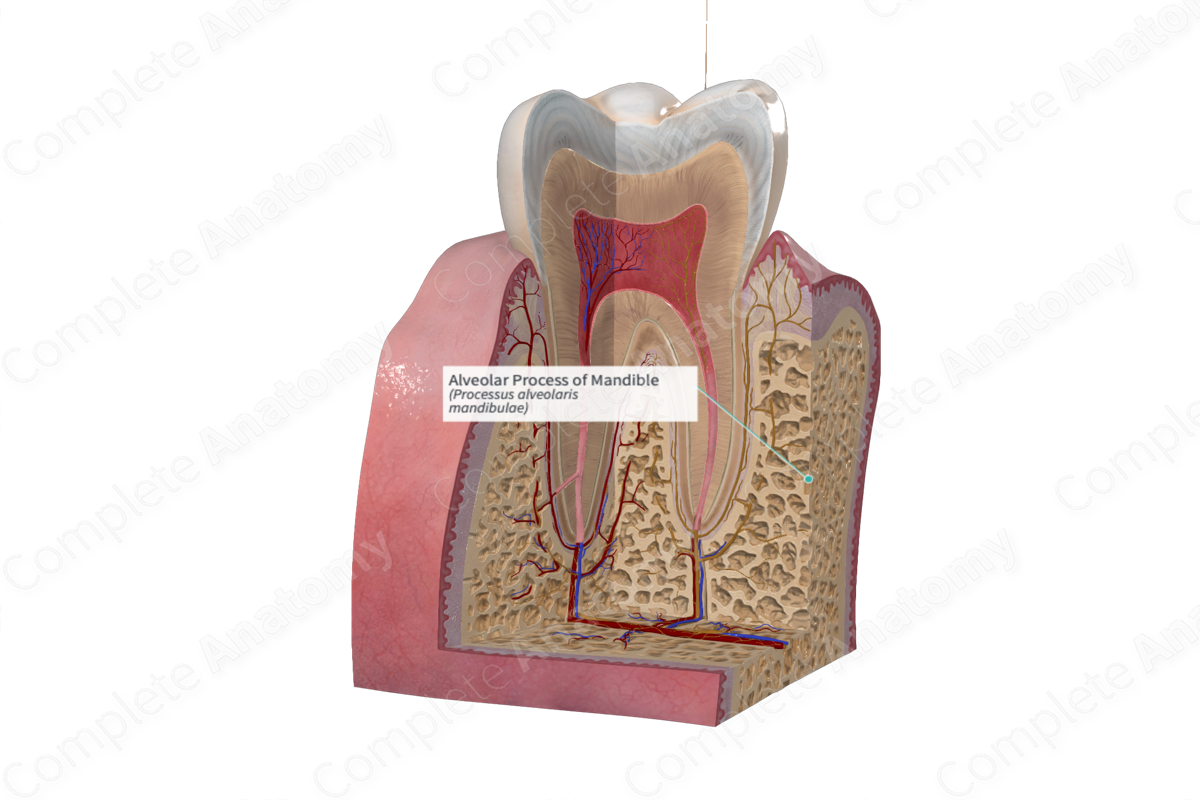
Alveolar Process of Mandible
Processus alveolaris mandibulae
Read moreQuick Facts
The alveolar process is the portion of bone in either the maxilla or the mandible that surrounds and supports the teeth (Dorland, 2011).
Structure and/or Key Feature(s)
The alveolar process is a thickened ridge of bone located on the mandible and maxilla bones that accommodate the dental alveoli, more commonly known as the tooth sockets (Standring, 2016).
The alveolar process shares a similar fundamental structure with all bones whereby a hard, outer layer of compact (cortical) surrounds a spongy core. The region of compact bone that lines the dental alveolus and lies adjacent to the periodontal ligament is termed the alveolar bone proper, radiographically known as the lamina dura. It provides an attachment site for the Sharpey’s fibers of the periodontal ligament, attaching the alveolar process to the cement of the tooth (Burr and Allen, 2013).
The alveolar bone proper is supported by another layer of compact bone, known as the cortical plate. Cortical plates of the alveolar process are separated by spongy bone are considered the outside wall of the maxilla and mandible bones (Standring, 2016).
The compact bone of the alveolar process contains numerous holes which facilitate the passing of Volkmann’s canals from the alveolar process into the periodontal ligament. Volkmann’s canals are small channels that transmit blood vessels.
The alveolar crest describes the most coronal part the alveolar process. The bony partitions that separate adjacent dental alveoli are known as interdental septum (Standring, 2016).
The alveolar bone, along with the gingiva, alveolar mucosa, cement, and periodontal ligament, comprise the periodontium.
Anatomical Relations
The alveolar process appears as a ridge on the superior and inferior surfaces of the mandible and maxilla, respectively.
Function
The alveolar process, along with the periodontal ligament and cement, functions to support the tooth. It provides the attachment site for Sharpey’s fibers from the periodontal ligament. As a bone, the alveolar process additionally provides attachment to muscles and acts as a reservoir for ions, such as calcium (Standring, 2016).
References
Burr, D. B. and Allen, M. R. (2013) Basic and Applied Bone Biology. Elsevier Science.
Dorland, W. (2011) Dorland's Illustrated Medical Dictionary. 32nd edn. Philadelphia, USA: Elsevier Saunders.
Standring, S. (2016) Gray's Anatomy: The Anatomical Basis of Clinical Practice. Gray's Anatomy Series 41 edn.: Elsevier Limited.
